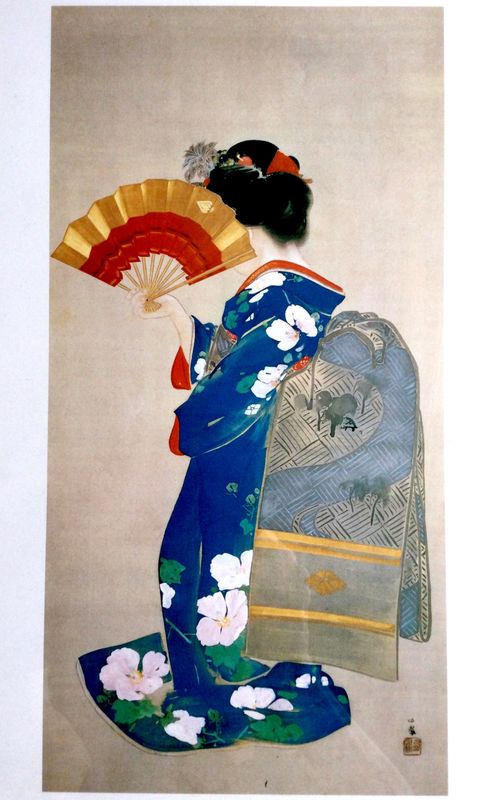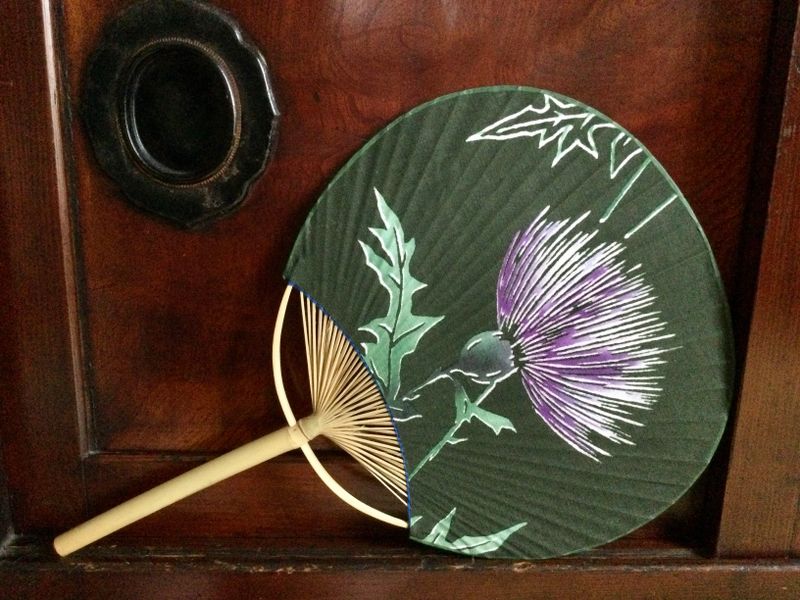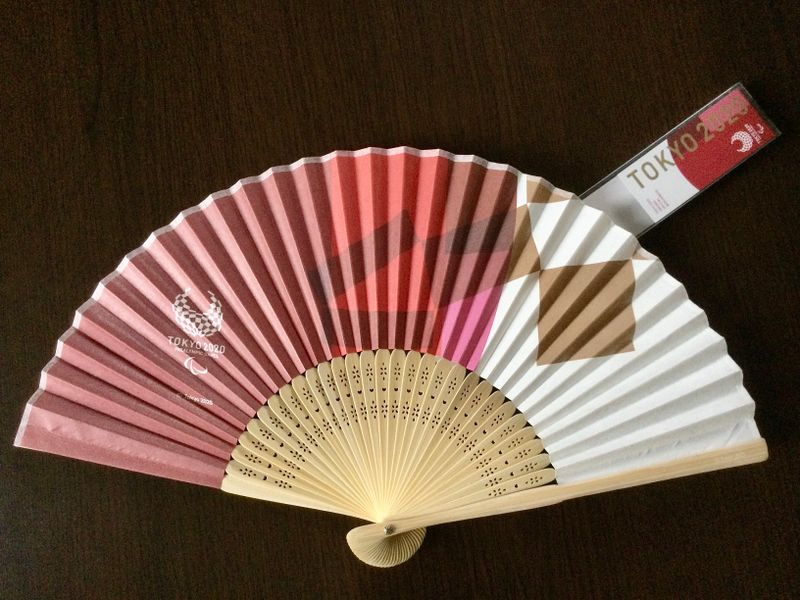Aug 26, 2021
Unfolding the Japanese Fan

Dance fan with gold on the reverse
Fans in Dance, Theater, and Storytelling
An early introduction to Japanese dance and theater got me hooked on Japanese fans. Long before I came to Japan my family hosted homestay guests, including a Tokyo businessman. In his introduction, he gifted us a large striped fan. He explained that, as part of his cultural training, he would perform a section of a Noh play using the fan. In Noh and Kyogen dramas, the fan is used as a gesture or as a prop. He provided us with an English text of the play so we could follow the narrative and get an impression of the interplay of movement with the fan. The fan he left us became a family heirloom of sorts, recalling his stay with us.
Later on my first sojourn in Japan on the JET Program, I worked under the direction of a supervisor whose hobby was rakugo comic storytelling. She didn’t speak English, and I was only just learning Japanese, but she occasionally regaled me with tales from the rakugo tradition.
The rakugo performer sits on a zabuton cushion for the entire presentation, performing all roles, and using only a tenugi hand towel and a folding fan. The fan can represent anything from a tobacco pipe to chopsticks to scissors. When the performer enumerates a list of points he or she may strike the table with the closed fan. Rakugo has become popular internationally with many English language storytellers. The English Rakugo Association hosts events where you can see how the fan is incorporated into the performance.
Nihon buyo classical dancers use sensu folding fans, too. The fan may conceal or reveal, or stand-in for an everyday object. The sumptuous costumes, bold movements, and elegant gestures make it fun to watch. Takeuchi Seiho depicted a dancer in his painting "Are Yudachi ni" which appears on Japan's postage stamps. The framed print hangs in my genkan.

「アレ夕立に」"Are Yudachi ni" by the painter Takeuchi Seiho
Warriors and Tea
The fan has had military applications in Japan, too. The gunbai rigid fan emblazoned with clan crests was used to signal troops on the battlefield. Samurai warriors carried folding gunsen with military motifs to fan themselves. From my experiences wearing armor, helmet, menpo mask, and carrying two or three weapons at historic festivals, I learned firsthand how overheated a warrior could get. Even at winter events with simply a light t-shirt and training uniform under my armor, I got very warm just marching, never mind fighting.
My colleagues and I when demonstrating martial arts occasionally use the hefty tessen. The tessen is about 35 centimeters and heavy because of its metal ribs and sturdy paper. With practice, you can open or close it with a loud crack. It can be used for distraction, concealment, or for striking and blocking when folded. A few times I did armbars or joint locks using the metal ribs’ edges and my partners howled in pain. I’m careful not to injure anybody with one of these fans! My martial school improvises with them, substituting the tessen for blades. But there is a whole world of tessen techniques. Some historic schools of martial arts even had systems of tessenjutsu.
My sensei one day presented me with a small fan and told me I’d need it the next time I participate in a tea ceremony. You might wonder why a Japanese martial artist would have advice about a tradition that today is dominated by women. In the Warring States era, samurai warriors adopted the tea ceremony to cultivate awareness, socialize, and express aesthetic sensibilities. An indispensable item for a tea ceremony guest is a folding fan. This fan is not usually opened in the tea ceremony. It’s used ceremonially when greeting participants or paying respects to the tea accouterments.
Boshu Uchiwa
This summer I retreated to the southern Boso Peninsula of Chiba Prefecture where Minamiboso City has a long history of boshu uchiwa fan production. My first stop was Chiba Prefecture’s first and perhaps the best michi no eki road station, Biwa Club. The station is popular for its local produce and handicrafts including boshu uchiwa fans.

A boshu uchiwa with a delicate lattice window
The Boshu Uchiwa fans are ranked, like so many traditions are in Japan, as one of three significant uchiwa fan traditions. The other two are Marugame Uchiwa of Kagawa Prefecture and Kyo Uchiwa from Kyoto. What distinguishes Boshu uchiwa is the slender medake variety of bamboo. The labor-intensive Boshu uchiwa production requires over 20 steps from selecting and cutting the bamboo to creating the frame to finishing with coated washi paper. The result of careful craftsmanship is a round fan with a delicate semicircular lattice. I picked up a few different sizes as gifts. Visitors to Minamiboso and Tateyama Cities on the Boso Peninsula can take part in Boshu uchiwa workshop experiences.
Collecting
Over time, I've accidentally become a fan collector. Before the 2020 Olympics got delayed, this novelty fan appeared in shops and I had to have it as a souvenir. These days I can't resist when I see quality fans at recycle shops and kimono boutiques. They're affordable and portable. When my collection gets too big, I give them as gifts.




0 Comments